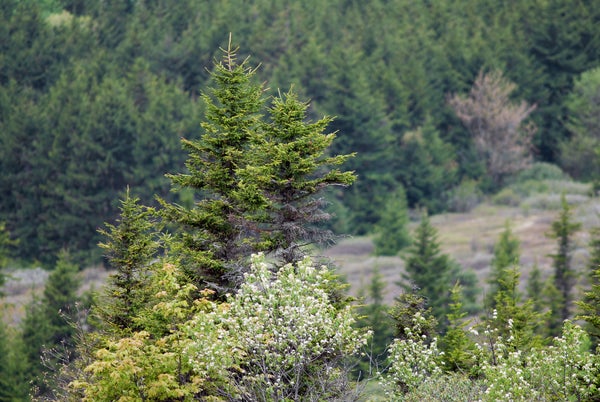Successful Reforestation Is Keeping the Eastern U.S. Cooler
Parts of the southeastern and central U.S. haven’t warmed as much as the rest of the country. Reforestation could be partially responsible for this “warming hole”
Dolly Sods Wilderness, now a protected part of the Monongahela National Forest in the Allegheny Mountains of West Virginia, was logged in the late 19th and early 20th centuries.
John M. Chase/Getty Images
Despite climate change cranking up the heat across the U.S., several eastern states have stayed curiously cool. It’s a mystery that hasn’t been fully solved—but now researchers think reforestation is partly responsible.
Many of the lush forests that are currently growing in the eastern U.S. didn’t exist two centuries ago. In the late 18th century European settlers started clearing vast swaths of the region’s trees for farmland and timber. By the early 20th century, in some forests that had existed for thousands of years, only 10 percent of trees remained. Land clearing eventually slowed by the early 1900s, partly because most of the forests had been cleared. Croplands were abandoned as people moved into growing cities or migrated west, giving trees a chance to regrow. That regeneration, along with purposeful replanting, allowed millions of acres of forests to make a comeback during the 20th century.
At the same time, the burning of fossil fuels began driving up temperatures around the U.S.—except in large parts of the southeastern and central regions. There are several theories as to why this area of cooler average temperatures, called a “warming hole,” exists: agricultural irrigation, for example, can tamp down temperatures through evaporative cooling, and aerosols (tiny particles of pollution) reflect the sun’s rays. But Indiana University ecologist Kim Novick wanted to know whether reforestation might have played a role, so she looked at where it and the U.S. warming hole overlapped—a roughly…
Read the full article here







